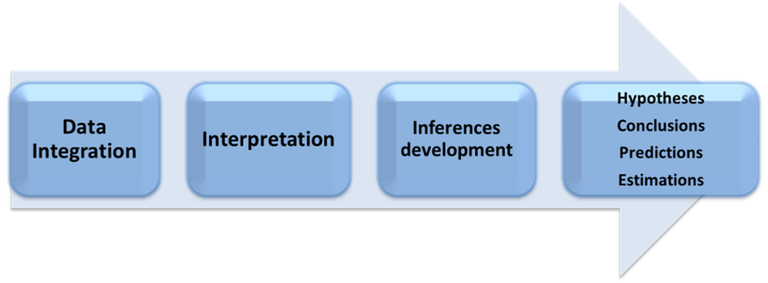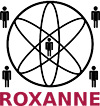The Analytical Process for Law Enforcement Agencies – From Basics to ROXANNE
The analytical process is aimed at the use and development of intelligence to direct law enforcement objectives, both for short-term operational aims and for long-term strategic reasons. The scope of analysis and its overall credibility depends on the level and accuracy of acquired information, combined with the skills of the analyst.
Analysis is a process which can be performed to assist with all types of law enforcement objectives. Different types of crimes and criminal operations require different scenarios, but in all cases the information used should not be pre-filtered through an artificially and arbitrarily imposed selective grid.
The analytical process:

Data integration is the first phase of the analytical process. It involves combining information from different sources in preparation for the formulation of inferences.
Various techniques may be used to display this information, the most common being the use of charting techniques:
- Link charting—to show relationships among entities featuring in the investigation;
- Event charting—to show chronological relationships among entities or sequences of events;
- Commodity flow charting—to explore the movement of money, narcotics;
- Activity charting—to identify activities involved in a criminal operation;
- Financial profiling—to identify concealed income of individuals or business entities and to identify indicators of economic crime;
- Frequency charting—to organize, summarize and interpret quantitative information;
- Data correlation—to illustrate relationships between different variables.
The next step in the analytical process is interpretation or logical reasoning, which requires going beyond the facts. The disciplined approach to analysis requires the maximum amount of information to be assessed at the time of integration to determine its relevance. Excluding information at the beginning of the process can easily lead to the significance of a vital piece of information being overlooked. This can lead to incorrect analysis, which can ultimately jeopardize an enquiry.
Analysis often identifies additional lines of enquiry that are tangential to the original one. In the past, it was usual to undertake these additional lines simultaneously and in conjunction with the main one. This approach led to dispersing of resources, delays and overall lower quality of the final investigation(s). Through experience, it has now become accepted that analytical projects should be undertaken sequentially, one at a time, or by independent teams of analysts. Data description and integration techniques, like link analysis, are not an end in themselves. They are simply tools used by analysts in the process of deriving meaning from information.
The first truly analytical result is an inference. An inference comes from the premises—one common mistake is to intuitively develop an inference and then look for premises that would support it.
A “premise” in inference development is used to identify facts or pieces of information that go together to make a particular point. Premises are the first and key stage in the true process of data analysis as against data description. Understanding how premises are identified is crucial to developing inferences.
Premises are the closest link to the described information, and thus are the most objective and accurate representation of data. For any given set of premises derived from a particular set of information, the premises may be combined in different ways to suggest different inferences.
There are four types of inferences:
- Hypothesis—a tentative explanation, a theory that requires additional information for confirmation or rejection.
- Prediction—an inference about something that will happen in the future.
- Estimation—an inference made about the whole from a sample, typically quantitative in nature.
- Conclusion—an explanation that is well supported.
It should be noted that all inferences require testing in some manner before they can be accepted as fact.
An intelligence analyst has the responsibility of disseminating analytical products to targeted audiences, as appropriate.
Data analytics is changing for the better: The development of smart analytic tools
A powerful tool for data analysis must offer visual analysis environment that provides users with a comprehensive range of capabilities so they can identify actionable intelligence hidden within disparate data sets.
These capabilities can help organizations and their users to:
- Combine all available information and build a single cohesive intelligence picture;
- Strengthen insight and understanding of complex criminal, terrorist, and fraudulent activities and networks;
- Increase the depth of intelligence products for more effective resource utilization;
- Clearly communicate analysis findings to enable more informed and effective operational decision making.
These capabilities can help analysts to quickly analyse complex data sets and enables users to:
- Quickly highlight key individuals and relationships and their connections to key events with core link analysis capabilities;
- Understand the critical timeline of events or patterns within criminal activities with powerful temporal analysis tools;
- Gain better insight and understanding of the structure, hierarchy and operations of complex networks with integrated Social Network Analysis tools;
- Identify potential important intermediaries between seemingly unconnected entities in a network;
- Instantly highlight potentially key information in communications and transactional data;
- Combine association, temporal and geospatial aspects of data with multi-dimensional analysis views.
One step forward to the future of LEA with ROXANNE platform
ROXANNE meets important LEA needs for state-of-the-art tools in order to efficiently investigate large criminal cases, using the new analytics platform. The technological developments provided in the ROXANNE analytical platform will help LEAs significantly improve investigation processes and the ability of LEAs to identify individuals, particularly in criminal cases where large amounts of lawfully intercepted communications are analysed. LEA will be able to identify persons of interest by using speech/text and video processing technologies and criminal network analysis. Also, the use of enhanced criminal network analysis technology will significantly reduce network size and aid decision making by police practitioners. ROXANNE will provide a dashboard for visualisation of investigation output and integrate with existing tools. Having the opportunity to deploy and evaluate the ROXANNE platform on real criminal cases, will help the LEAs adopt the technology in their daily work.

